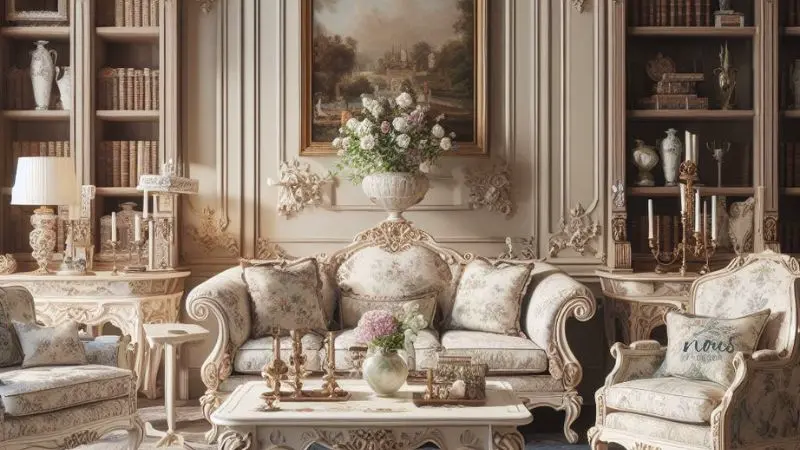What Is Traditional Furniture Styles?
When it comes to interior design, conventional furniture continues to be a well-known choice for many homeowners. These classic furniture usually made from dark-colored woods, harken back to the 18th- and 19th-century European and American furniture designs, and are characterized by their elaborate detailing and timeless grace.
In contrast to the sharp angles and minimalist designs of the modernist movement, conventional furniture is known for their curved lines, intricate carvings, and luxurious fabrics. The Jacobean era, for example, brought us furniture with intricate carving and robust structure which continues to be a part of conventional furniture.
Conventional furniture are commonly found in living and dining rooms where they often provide elegant living room seating and dining area furniture. They are a common choice for those seeking to create a warm and inviting atmosphere in their homes.
Throughout the 19th and early 20th centuries, conventional furniture evolved and adapted to changing trends in interior design, but they have always maintained their common characteristics. Today, conventional furniture styles continue to be a reputable choice for those looking to add a touch of timeless grace to their homes. Whether it’s a classic Victorian sofa or an elaborate dining table, conventional furniture styles are a versatile and enduring option for any home.
In this Neusdecor article, we will answer the question “What Is Traditional Furniture Styles” and learn more about this unique style.
Takeaways
- Traditional Furniture Styles encompass a diverse array of design aesthetics and historical influences.
- These styles exhibit distinctive characteristics from the elaborate and elaborate designs of Victorian Furniture to the streamlined and geometric elements embodied by Art Deco Furniture.
- Each sub-style represents an object of admiration for its unique attributes, like the early American design aesthetics represented in Colonial Furniture, showcasing its influence on modern rustic décor.
- Moreover, the intricate woodworking techniques showcased by Chippendale Furniture underscore its lasting impact on traditional craftsmanship.
- Within the realm of conventional furniture, the reflection of rustic grace and simplicity found in French Provincial Furniture has left a significant mark, influencing trends like the shabby chic design movement.
- Thus, understanding conventional furniture styles involves exploring these diverse sub-styles as interconnected elements within a broader framework of design history and cultural significance.
What Is Traditional Furniture Styles?
Conventional furniture styles encompass a wide range of design influences and aesthetic choices, including traditional Indian furniture and traditional interior decor. This type of furniture is often characterized by its classic and timeless appeal, and it is typically crafted using high-quality materials, such as cherry wood, to ensure durability. Conventional furniture is also distinct from contemporary furniture style, as it often evokes a sense of history and nostalgia.
They are commonly used in interior decorating to create a warm and inviting atmosphere, and they may be combined with modern classic or transitional furniture to achieve a more eclectic look. Additionally, conventional furniture may also encompass revival furniture, which seeks to reproduce historical designs, as well as abstract pieces that interpret traditional forms in a modern context.
Ultimately, conventional furniture offers a wealth of options for those who appreciate the grace and sophistication of classic designs.
Some of The Popular Traditional Styles For Furniture
Conventional styles are often characterized by their classic and timeless designs, reflecting different cultural and historical influences.
- Queen Anne: Originating in the early 18th century in England, it is characterized by its graceful curves, cabriole legs, and pad feet, and often features intricate carving and a mix of walnut, cherry, and maple woods. This graceful and refined style is known for its emphasis on comfort and sophistication.
- Pennsylvania Dutch: Originating in the late 17th century in Pennsylvania by German immigrants, it is recognized for its sturdy craftsmanship, decorative folk art motifs like tulips, hearts, and birds, and the use of regional woods such as oak, cherry, and pine. This style reflects a fusion of Germanic traditions with American influence, featuring distinctive hand-painted designs and functional, practical forms.
- Louis XVI: The Louis XVI furniture style emerged in 18th-century France during the reign of King Louis XVI and is characterized by its neoclassical influences, straight lines, symmetry, delicate details like fluting, floral motifs, and the use of luxurious materials like mahogany, marble, and gilt bronze. This style represents a shift from the opulence of the preceding Rococo period to a more refined, geometric elegance inspired by ancient Roman and Greek designs.
- Chippendale: This furniture style, originating in 18th-century England, is distinguished by its intricate craftsmanship, intricate carvings, cabriole legs, ball-and-claw feet, and a blend of Gothic, Chinese, and Rococo influences. Named after the cabinetmaker Thomas Chippendale, this style showcased a wide range of designs from elaborately detailed pieces to simpler, more geometric forms, reflecting both opulence and practicality.
These conventional styles are often paired with complementary furniture and accessories, creating a cohesive and harmonious look in any room. Whether found in vintage furniture shops or modern furniture stores, these styles have stood the test of time, successfully merging traditional and contemporary design with the rich history of traditional furniture. As a result, these styles of furniture have emerged as timeless and versatile choices for both furniture and decor, adding charm and character to any new traditional room.
Source: https://nousdecor.com/what-is-traditional-furniture-styles/


Comments
Post a Comment